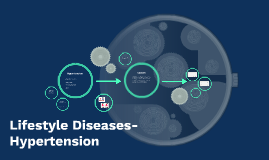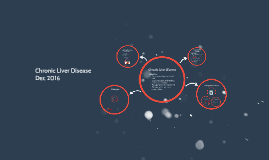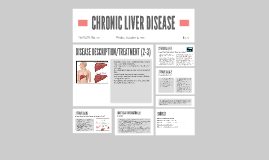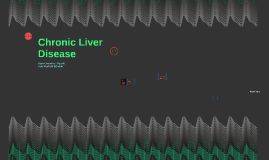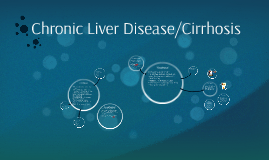Chronic Liver Disease
Transcript: Chief complaints Physical Examination Laboratory workup Typical Chronic Lab Work-up Hep A/B/C serologies, ANA, ASMA, A1AT, AMA, Immunoglobulins, ceruloplasmin, antiTTG, fasting lipid profile, (BHCG), iron studies (TIBC, TSat, Iron), ferritin Developing countries: Schistosomiasis serology Thousands Club 1. Tylenol overdose 2. Ischemic liver injury 3. Viral hepatitis (EBV, CMV, Hep A/B) 4. HELLP syndrome 5. Vascular occlusion (B-C, PVT) 6. (Auto-immune hepatitis) Vital signs Decreased blood pressure HEENT Jaundice, fetor hepaticus, enlarged parotids, muscle wasting Precordial examination Spider angiomata, gynecomastia, loss of chest hair in men Abdominal examination Splenomegaly, hepatic size, findings of ascites, caput medusae Extremity findings Palmar erythema, clubbing, Dupuytren's, pedal edema, muscle wasting Neurologic examination Asterixes, confusion Acute Complications of Liver Disease Chronic Liver Disease 1. Determine etiology History/Physical/Labs Abdominal ultrasound/PV Imaging +/- MRCP +/- Liver biopsy +/- Paracentesis 2. Determine severity and risk of progression MELD and Child-Pugh 3. Screen for associated complications Varices with EGD HCC Paracentesis Chronic Liver Disease Dec 2016 MRI/MRCP Child-Pugh Score The Liver Bomb Variables: Encephalopathy, Ascites, Bilirubin, INR, Albumin Estimates 1- and 2- year survival rate CP A = 100% one year survival rate CP B = 80 % one year survival rate CP C = 45% one year survival rate Also predicts peri-op mortality 10%, 30%, 80% Management of CLD Lab Findings Objectives: Review clinical presentation of CLD Discuss etiologies and work-up of initial presentation Management of the liver bomb Management of common complications MRI Liver Evaluates liver parenchyma Useful for iron overload MRCP Non-invasive ERCP For evaluating the intra and extra hepatic ducts and pancreatic duct Used generally if obstructive pattern of LFTs with normal U/S PSC, cholangiocarcinoma, biliary or pancreatic stones, etc Example 3 45 yo male, hx 3-4 beers per day Presents with ascites AST 300, ALT 200, Bili 38, albumin/INR normal Ferritin 600, Iron stores normal Ultrasound: Fatty liver disease Biopsy? Work-Up of New Diagnosis Symptoms Spontaneous Bacterial Peritonitis Abdominal ultrasound is always first test of choice Non-invasive, no contrast, easily available Provides information regarding cirrhotic state and regarding portal hypertension Can rule out portal vein thrombosis Screens for HCC Low sensitivity for cirrhosis Fibroscan Liver Biopsy UGIB/Coagulopathy Etiologies Constitutional symptoms Anorexia Weight loss Fatigue Relating to ascites Increasing weight, abdominal girth Early satiety SOB/Orthopnea Hepatic decompensation Hepatic encephalopathy Jaundice Upper GIB Variables: Bili, INR, creatinine, (Na) Estimates 3 month mortality For organ allocation Who needs a liver biopsy? Anybody who the diagnosis is uncertain and a biopsy would change management A - Hepatitis A, auto-immune hepatitis, AIAT B - Hep B, Primary Biliary Cirrhosis C - Hep C*, Wilson's disease D - DRUGS E - Ethanol* F - Fatty liver disease* G - Girls H - Hemochromatosis, heart disease I - (Iron), Infiltrative disease (sarcoid, amyloid), Infections * = responsible for >80% of cirrhosis in Canada Similar to above, prevent complications Treat underlying cause Refer for consideration of liver transplant for any transplant candidate! Renal Failure Abdominal Imaging Ascites Metabolic Abnormalities Hepatic Encephalopathy Acute In-Hospital Complications Who to suspect SBP in? Physical Examination Example 2 45 yo female, hx of Type 1 DM and Celiac disease Found to have ALT 600, AST 550, GGT400, bili 35, IgG 23 (high) ANA + ASMA + All other work-up negative Biopsy? Initial Management 1. Alcohol cessation 2. No NSAIDs! 3. Limit sodium restriction 4. Diuretics Lasix/Spironolactone 40:100 dosing No IV diuretics 5. D/C beta-blockers if refractory ascites Refractory Ascites 6. Large volume paracentesis + albumin 7. Consider midodrine 8. Consider TIPS Management of SBP 1. "2 Large Bore IVs, pantoprazole, octreotide, call the surgeon" 2. Supportive care ICU, blood product 3. Correct coagulopathy INR elevated - FFP Thrombocytopenia - Give platelets 4. EGD - timing depends on presentation 5. **SBP Prophylaxis** 1. Antibiotics 2. Albumin 3. Secondary prophylaxis Anybody who comes into hospital with ascites! Anybody with ascites who has any clinical symptoms of: Fever Abdominal pain/tenderness Confusion Diarrhea Ileus Hypotension Hypothermia Sepsis/SBP Coagulopathy/Varices/UGIB Renal Failure / HRS Encephalopathy Ascites Metabolic abnormalities - hypoglycemia, acidosis Out of Hospital Management Liver enzymes AST, ALT, ALP, GGT Liver function tests Bilirubin, albumin, INR CBC Thrombocytopenia Anemia Macrocytosis Chemistry Hyponatremia Elevated creatinine Hypoglycemia Acid-base disturbance 1. Supportive care Intubation, etc 2. Find and treat underlying precipitant Drugs, UGIB, metabolic abns, infection, hypovolemia 3. Lactulose Beware








